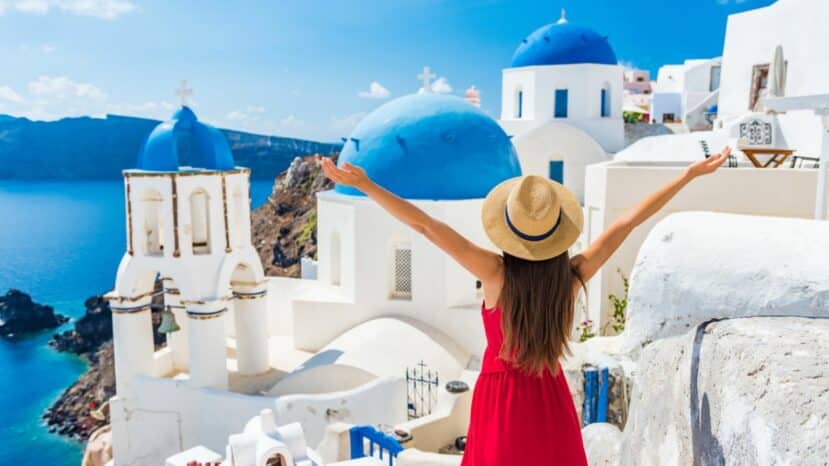Five European cities where tourists (really) outnumber locals

Every summer, the population of some European destinations literally explodes… and with good reason, with waves of visitors pouring in by the thousands. A study conducted by Solidu, in partnership with Euromonitor International, examined this phenomenon by comparing the number of tourist arrivals with the number of inhabitants in 2024. The result: a clear ranking. And we’ve chosen to highlight five of them Europe’s most “overloaded” cities. Spoiler alert: if you’re looking for peace and quiet, don’t bother.
Dubrovnik, the postcard taken by storm
Dubrovnik takes the prize. At the top of the list, Dubrovnik is the epitome of mass tourism. A superb city perched on the shores of the Adriatic, Dubrovnik’s destiny changed when the series Game of Thrones decided to set its scenes here. Since then, the town has been taken by storm.
In 2023, there were almost 27 tourists for every inhabitant. Since then, the authorities have tried to regulate the situation – limiting the number of cruise passengers, setting quotas for organized groups – but the impression on the ground is still the same: Dubrovnik has become more of a place to pass through than a place to live.
Rhodes: the island that wobbles under suitcases
In second place, Rhodes, Greece, boasts a ratio of 26 tourists per inhabitant. Here again, the recipe is well known: a listed medieval center, beaches as far as the eye can see, an ideal climate… and a well-established tourist infrastructure. Too well, perhaps.
In high season, buses pour their stream of travelers into the same streets, at the same times. The restaurants are overflowing, the beaches are shrinking. And if you step outside the city center, you discover an island that also needs to breathe. For the locals, summer has become synonymous with adaptation: shifted schedules, alternative itineraries, retreat to higher ground.
Venice, an open-air museum… but for how long?
Venice needs no introduction. And yet, much more could be said. Not least that every year, the Serenissima welcomes more than 21 visitors per inhabitant. A staggering figure when you consider that the local population is declining year after year.
Venice is beautiful, unique and fragile. But it’s also becoming uninhabitable. Venetians leave the city, replaced by transients. Stores close or are transformed. And in summer, the vaporettos resemble subway cars.
In 2024, the city began charging admission to day-trippers. A symbolic gesture, but one that says a lot. Venice is trying not to lose itself entirely.
Heraklion: entry point, saturation point
Fourth on the list: Heraklion. Capital of Crete, this city is first and foremost a gateway. You land here, you dock here, you transit here. And sometimes, you stay. But even if Heraklion isn’t a destination in itself, it’s still a busy place. The result: 18 tourists for every inhabitant.
Museums, ferries and air-conditioned buses set the pace in the city. The center becomes a crossroads. Here, you can grab a coffee before heading off to the southern beaches. We stop here between two excursions. But for the locals, the impression is one of permanent flux, of perpetual in-between.
Florence: when art attracts more than the sea
Florence closes the top 5, with around 14 tourists per inhabitant. This may not seem so spectacular, but the feeling is often more intense. Because Florence is small. And dense. And in just a few streets, its historic heart is home to one of the highest densities of masterpieces in the world.
From the Ponte Vecchio to the Uffizi Gallery, via the Piazza della Signoria, everything is within walking distance – and flash. The city is not a seaside resort. It doesn’t offer idleness. But it does attract a continuous, greedy, hurried crowd. Queues are part of the landscape. And calm here is a rare luxury.
What these figures don’t always say
You’d think that this ranking was just for tourists. But it’s really about cities. And what they become. Because beyond visitor numbers, there are concrete effects: prices that rise, businesses that change, schools that close, residents who leave.
Too many visitors can mean less life. Less mix, less identity. A city is more than just its monuments. It’s made up of the people who live, work and grow up there. And when tourism takes over, that balance shifts.
It’s still possible to travel differently
This ranking is not a warning, but an invitation. To shift your travel plans. To choose to stay a little longer. To pass through the backyard rather than the main entrance. To travel less, perhaps, but better.
Visit Florence in November. Stroll around Rhodes at dawn. Sleep in Mestre and discover Venice on foot at seven in the morning. Or simply look elsewhere. In cities we know less about, but which are just waiting to be discovered.
Because yes, these destinations are beautiful. But they don’t deserve to be turned into a backdrop. And we deserve better than just another photo, hastily taken between two groups of cruise passengers.
Read also: Where to brunch or dine in Paris with a view? Discover Diamant Bleu on the Seine




